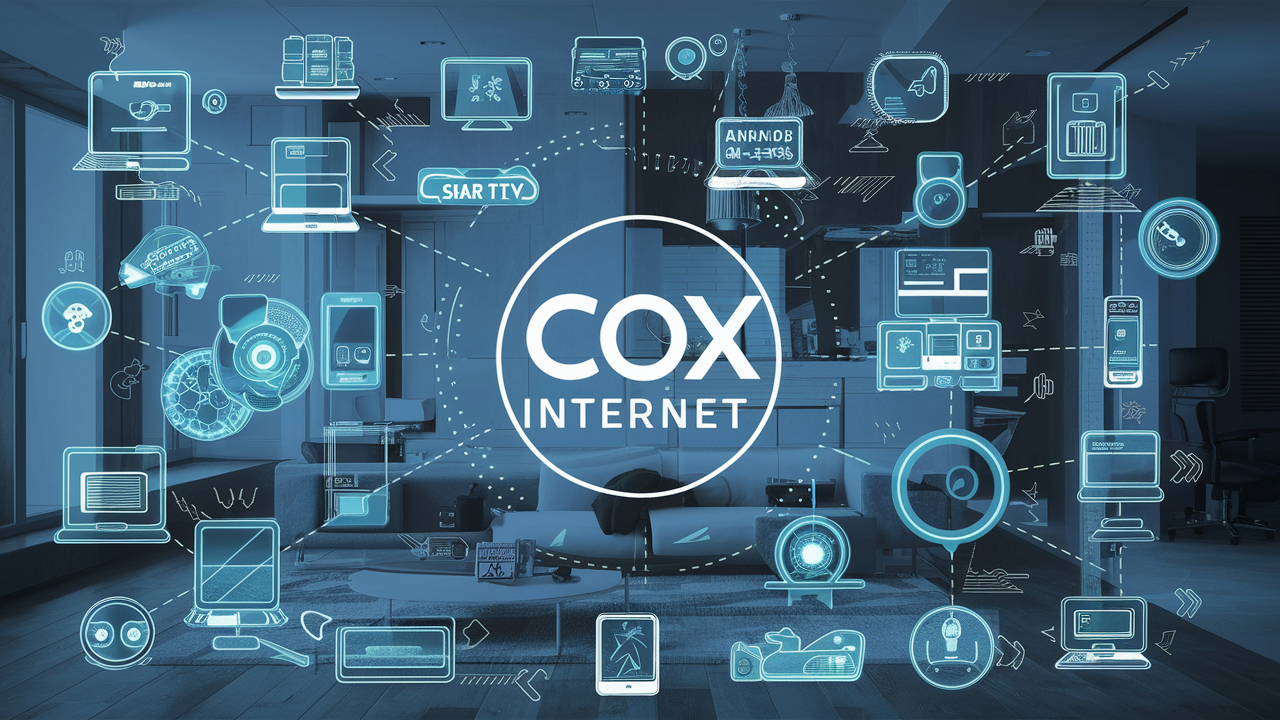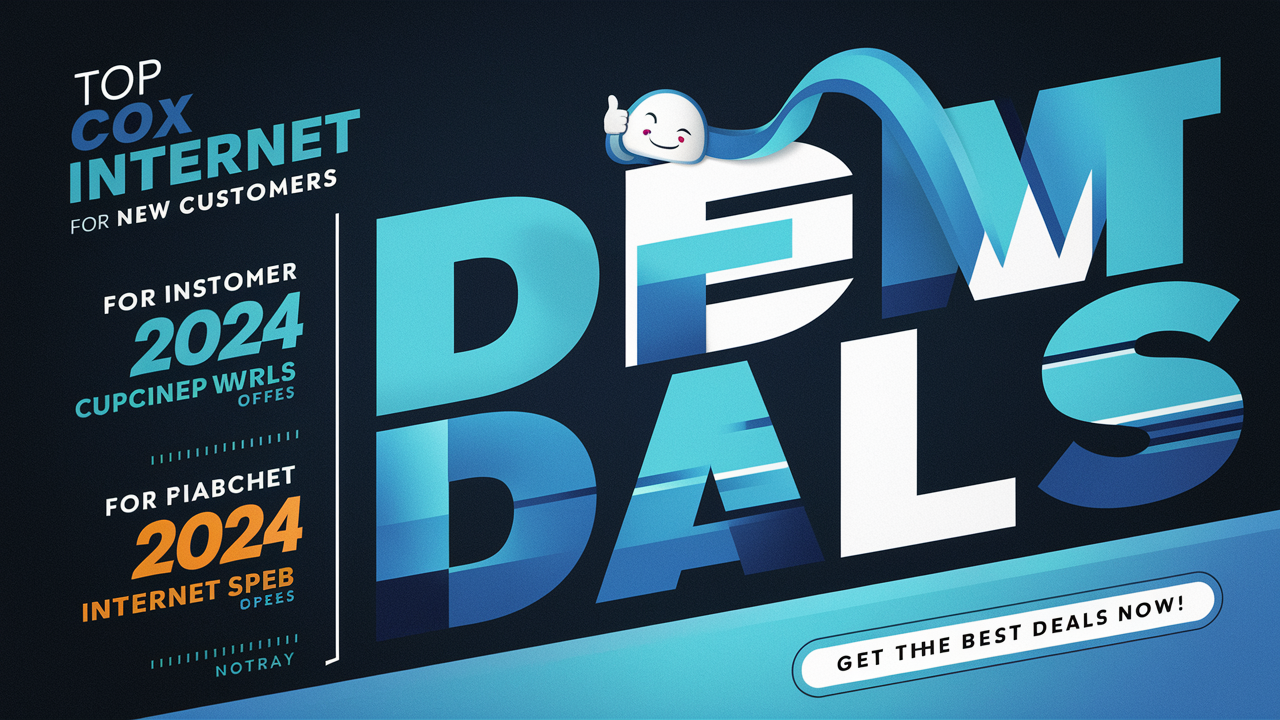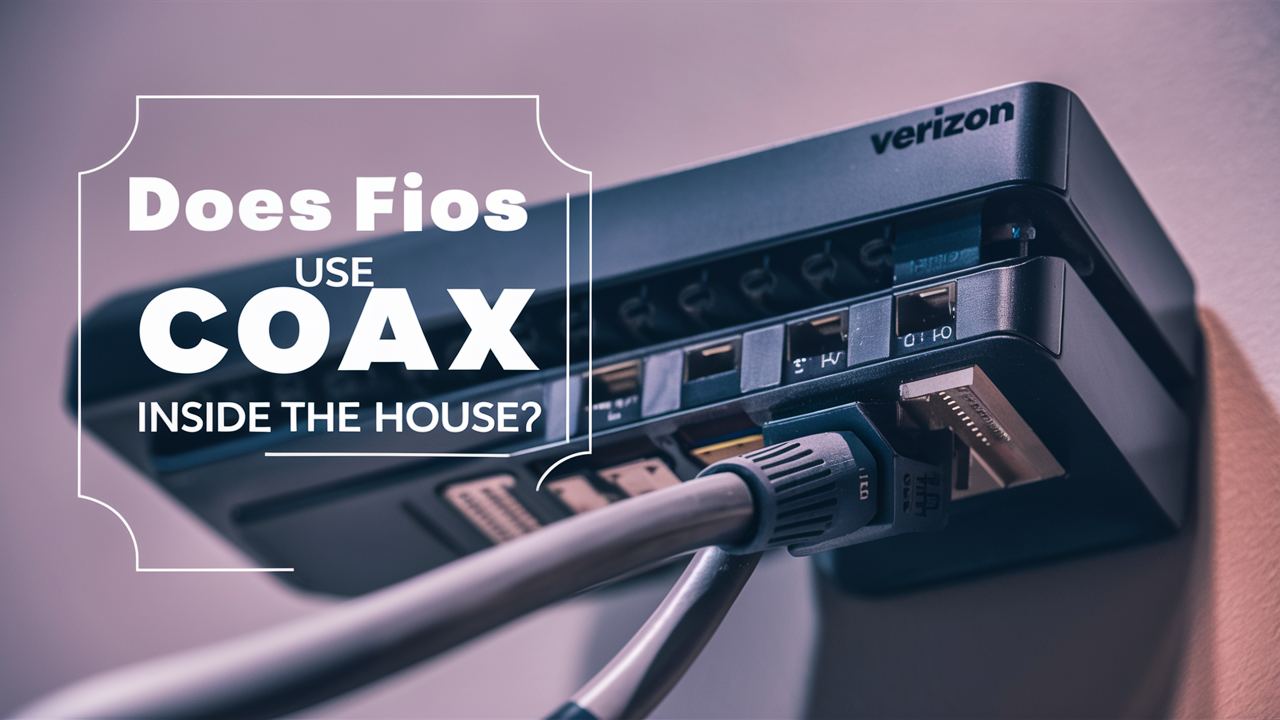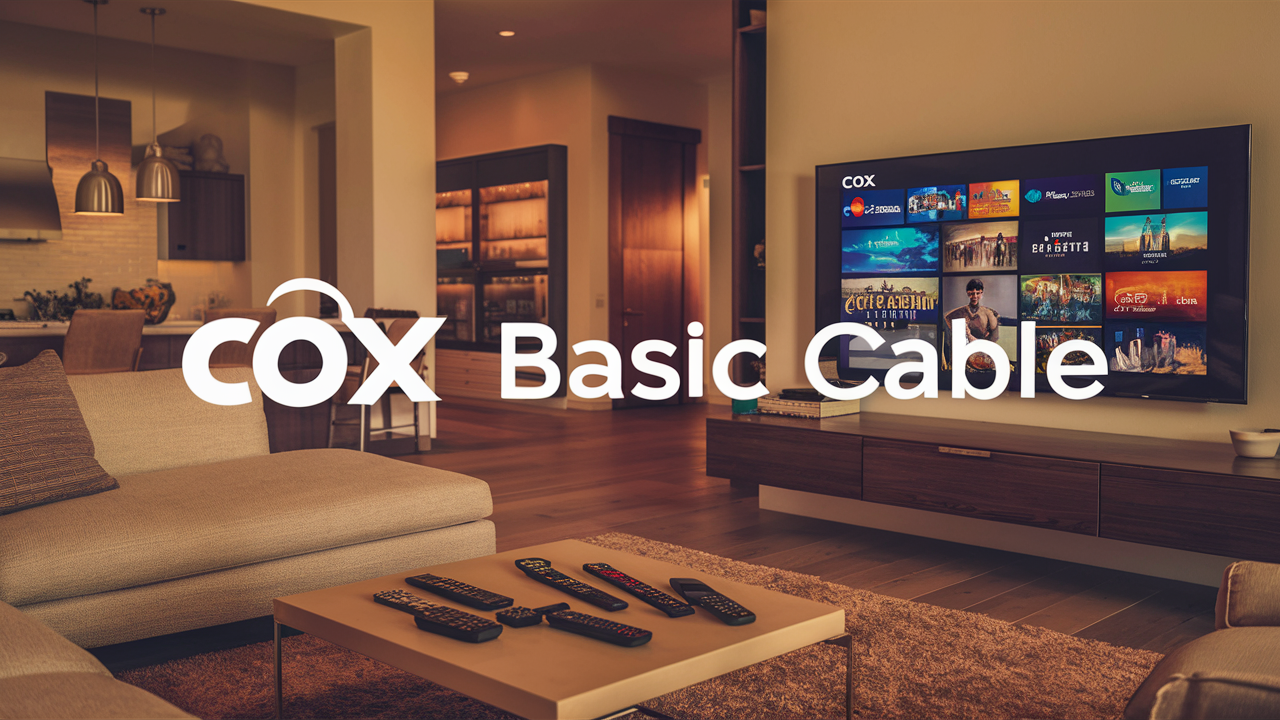What Uses Data on Cox Internet?

Understanding what consumes data on your Cox Internet connection is crucial for managing your usage, avoiding overage charges, and ensuring a smooth online experience. This guide breaks down the common culprits and provides actionable insights for 2025.
Understanding Cox Internet Data Usage
Cox Internet, like most residential internet services, operates on a data allowance model. This means that while you have a connection, the amount of data you can transfer in a given billing cycle is capped. Exceeding this cap can lead to throttled speeds or additional charges, depending on your specific plan. Understanding what activities consume the most data is the first step toward effective management. In 2025, with the proliferation of high-definition content and an ever-increasing number of connected devices, data consumption is more significant than ever. This section will lay the groundwork for comprehending how your online activities translate into data usage on your Cox network.
What Exactly is Internet Data?
Internet data, often measured in gigabytes (GB) or terabytes (TB), refers to the information transmitted to and from your devices over your internet connection. Every action you take online – from loading a webpage to streaming a movie, sending an email, or playing a video game – involves the exchange of data. Your Internet Service Provider (ISP), such as Cox, tracks this total volume of data transferred to and from your home network. This is often referred to as your "data allowance" or "data cap."
How Cox Measures Data
Cox measures data usage by tracking the total amount of data uploaded and downloaded by all devices connected to your home network. This includes everything from your smart TV streaming Netflix to your laptop browsing the web and your smartphone receiving notifications. Cox typically provides tools, often through their website or a dedicated app, to monitor your real-time data consumption. This visibility is key to staying within your plan's limits.
Why Data Caps Exist
Data caps are a common practice among ISPs to manage network congestion and ensure fair usage for all customers. High-bandwidth activities, like streaming 4K video or downloading large files, can consume significant network resources. By implementing data caps, ISPs can better distribute their available bandwidth and prevent a few heavy users from negatively impacting the experience of others. For 2025, as bandwidth demands continue to surge, understanding these caps is paramount.
Streaming Services: The Biggest Data Eaters
In 2025, video streaming remains the single largest contributor to data consumption for most households. The convenience of on-demand entertainment comes at a data cost, with higher resolutions demanding exponentially more bandwidth. Understanding the nuances of streaming quality and its impact on your Cox data usage can save you significant amounts of data.
How Streaming Works and Data Consumption
When you stream a video, your device downloads a continuous flow of data that is then played back. The amount of data consumed depends heavily on the video's resolution (e.g., Standard Definition, High Definition, 4K Ultra HD) and the duration of playback. Higher resolutions require more data per minute because they contain more visual information.
Data Usage by Resolution (Approximate per Hour in 2025)
It's essential to have a clear understanding of how resolution impacts data. Here's a general guideline for common streaming services:
| Video Quality | Approximate Data Usage Per Hour |
|---|---|
| Standard Definition (SD) | 0.7 GB - 1 GB |
| High Definition (HD) - 720p | 1.5 GB - 2.5 GB |
| Full High Definition (FHD) - 1080p | 3 GB - 5 GB |
| 4K Ultra HD (UHD) | 7 GB - 15 GB+ |
Major Streaming Platforms and Their Data Demands
Popular platforms like Netflix, Hulu, Disney+, YouTube, and Amazon Prime Video all have varying data consumption rates. While they often offer automatic quality adjustments, manual control can be beneficial.
- Netflix: Offers different quality settings. Basic (SD) uses around 0.7 GB/hour, HD uses about 3 GB/hour, and 4K can consume up to 7 GB/hour or more.
- YouTube: Similar to Netflix, YouTube's data usage varies by resolution. A 1080p stream can use around 2.5 GB/hour, while 4K can easily exceed 7 GB/hour.
- Disney+: Known for its high-quality content, Disney+ streams in HD and 4K. Expect HD to use around 2.5 GB/hour and 4K to push towards 7 GB/hour.
- Hulu: Hulu's data usage is comparable to other HD streaming services, typically ranging from 1.5 GB to 3 GB per hour for HD content.
- Amazon Prime Video: Data usage is similar to Netflix and Hulu, with HD streams consuming around 3 GB per hour.
Live TV Streaming vs. On-Demand
Live TV streaming services like YouTube TV, Sling TV, or Hulu + Live TV can also be significant data consumers. While the resolution might be slightly lower than premium on-demand services, the constant stream for live events or channels can add up quickly. For instance, watching a 2-hour live sports event in HD could easily consume 5-6 GB of data.
Audio Streaming Data Considerations
While audio streaming uses considerably less data than video, it's not negligible, especially if you listen for extended periods. Services like Spotify, Apple Music, or Pandora can consume anywhere from 50 MB to 250 MB per hour, depending on the audio quality selected. For a music enthusiast who streams 8 hours a day, this can add up to 1-2 GB daily.
Online Gaming: More Than Just Play
Online gaming is a popular pastime, but it's not just about the gameplay itself. Downloading game updates, patches, and even the initial game files can be massive data consumers. The actual gameplay data transmitted is generally less than streaming, but it's still a factor to consider for serious gamers on Cox Internet.
Gameplay Data Usage
The amount of data used during actual online gameplay is relatively low compared to streaming. For most multiplayer games, this might range from 50 MB to 300 MB per hour. This is because games transmit relatively small packets of information about player positions, actions, and game state, rather than large video or audio files. However, for someone who spends many hours gaming daily, this can accumulate.
Game Downloads and Updates
This is where online gaming truly impacts data usage. Modern video games can be tens or even hundreds of gigabytes in size. A single new game download can consume a significant portion, if not all, of a monthly data allowance. Furthermore, game developers frequently release patches and updates, which can range from a few gigabytes to over 50 GB for major content drops. In 2025, with increasingly complex and graphically rich games, these download sizes are only expected to grow.
Example Game Download Scenario:
Imagine downloading a new AAA title that is 100 GB. If your Cox data cap is 1.2 TB (1200 GB) per month, this single download consumes approximately 8.3% of your allowance. If you also download a 20 GB update for another game later in the month, that adds another 1.7%. Consistent gaming with frequent downloads and updates can quickly strain a data cap.
Streaming Gameplay on Platforms Like Twitch
If you stream your gameplay on platforms like Twitch or YouTube Gaming, the data consumption shifts dramatically. Streaming your own gameplay requires uploading video and audio, which is generally more data-intensive than downloading. Streaming at 720p can use around 2.5 GB per hour, while 1080p can easily consume 5 GB per hour or more. This is in addition to any data used by the game itself.
Console and PC Specific Usage
Both PC and console gaming platforms (PlayStation, Xbox, Nintendo Switch) download and update games. The underlying data usage principles remain the same. However, the way these platforms manage downloads and updates can differ, so it's worth checking the settings on your specific device.
Video Conferencing and Calls
The rise of remote work and constant connectivity means video conferencing and voice calls are integral to many households. While often perceived as less data-intensive than video streaming, high-quality video calls can consume a surprising amount of data, especially over extended periods.
How Video Calls Consume Data
Video conferencing applications (Zoom, Microsoft Teams, Google Meet, Skype, etc.) send and receive video and audio streams. The data usage is dependent on the video and audio quality, the number of participants, and whether you are actively speaking or just listening. Higher resolutions and more participants generally lead to increased data consumption.
Data Usage for Video Calls (Approximate Per Hour):
| Service/Quality | Approximate Data Usage Per Hour |
|---|---|
| Zoom (SD Video) | 0.8 GB - 1.5 GB |
| Zoom (HD Video) | 1.5 GB - 2.5 GB |
| Microsoft Teams (HD Video) | 1.5 GB - 3 GB |
| Google Meet (HD Video) | 1.5 GB - 3 GB |
| Skype (HD Video) | 1.5 GB - 3 GB |
| Audio-Only Calls (Most Services) | 0.05 GB - 0.15 GB |
Impact of Multiple Participants
When you're in a video conference with many people, your device is receiving video streams from all active participants. This significantly increases data consumption compared to a one-on-one call. A large meeting with HD video feeds from 10+ participants can easily push data usage towards the higher end of the estimates.
Video Conferencing vs. Voice Calls
Pure voice calls, like those made through VoIP services or even standard phone calls over apps like WhatsApp or Signal, consume substantially less data than video calls. These typically use less than 0.2 GB per hour. If data is a concern, opting for audio-only calls when video isn't essential can be a smart strategy.
Business and Education Usage
For individuals working or studying from home, video conferencing can be a daily, multi-hour activity. A full workday (8 hours) of HD video conferencing could consume anywhere from 12 GB to 24 GB of data, making it a substantial part of a household's total usage. This highlights the importance of monitoring usage, especially for those with limited data plans.
Social Media and Web Browsing
While often considered lighter activities, the cumulative effect of social media engagement and general web browsing can contribute to your Cox Internet data usage. The modern web is rich with media, and social platforms are designed to keep you engaged, often through auto-playing videos and high-resolution images.
Social Media Data Consumption
Platforms like Facebook, Instagram, TikTok, Twitter (X), and Pinterest all consume data. Key contributors include:
- Auto-playing videos: Many platforms now automatically play videos as you scroll, even if you don't click on them. This can be a significant, often unnoticed, data drain.
- High-resolution images and graphics: Modern social feeds are filled with visually rich content.
- Stories and short-form video: Features like Instagram Stories, Facebook Stories, and TikTok are designed for frequent viewing and can add up.
- Live streams: Watching live videos on social platforms uses data similar to other live streaming services.
A moderate user might spend 1-2 GB per day on social media, while heavy users, especially those who watch a lot of video content, could easily consume 3-5 GB or more daily.
Web Browsing Data Usage
The data used for web browsing varies greatly depending on the websites visited. Simple text-based pages use very little data. However, modern websites often include:
- Images: High-resolution images, even on news sites or blogs, consume data.
- Videos: Many articles now embed videos, which will play and consume data.
- Advertisements: Many online ads are video-based or contain rich media, contributing to data usage.
- Scripts and trackers: Websites use various scripts for functionality and tracking, which also consume data.
Estimates suggest that browsing a typical webpage can consume between 0.5 MB and 5 MB, depending on its complexity. For a user who browses many pages throughout the day, this can add up to several hundred megabytes or even over 1 GB daily.
Impact of Ad-Blockers and Settings
Using ad-blockers can significantly reduce data consumption from web browsing, as they prevent many data-heavy advertisements from loading. Similarly, disabling auto-play videos in browser settings or on social media platforms can also help conserve data.
Downloading and Uploading Files
Directly transferring files, whether for work, personal use, or entertainment, is a fundamental aspect of internet usage. This category includes everything from downloading software and documents to uploading photos and videos to cloud services or sharing them online. These activities can be highly data-intensive, especially for large files.
Downloading Large Files
This encompasses a wide range of activities:
- Software and Application Downloads: Operating system updates, new software installations, and game downloads (as discussed earlier) are prime examples.
- Media Downloads: Downloading movies, TV shows, music albums, or podcasts for offline viewing/listening.
- Document and Resource Downloads: Downloading large research papers, design files, or datasets for work or study.
The data consumed is directly proportional to the file size. A 1 GB file consumes 1 GB of data. A 50 GB game download consumes 50 GB. This is why a single large download can drastically impact your Cox data allowance.
Uploading Files
Uploading data is the reverse process – sending information from your devices to the internet. Common scenarios include:
- Cloud Storage Syncing: Services like Google Drive, Dropbox, and OneDrive upload your local files to the cloud.
- Photo and Video Sharing: Uploading photos to social media, sending large video files via email or messaging apps.
- Backup Services: Many services automatically back up your data to the cloud.
- Content Creation: Uploading videos to YouTube, streaming gameplay, or uploading large project files for work.
While often less frequent than downloading for many users, uploading can be just as data-intensive. Uploading a 1 GB video file consumes 1 GB of data. For content creators or those who frequently back up large amounts of data, upload usage can be substantial.
Data Usage Comparison: Download vs. Upload
In terms of data consumption, downloading and uploading are equal. A 1 GB download uses 1 GB of data, and a 1 GB upload uses 1 GB of data. The distinction is important for understanding where your data is going. Many users focus on downloads, but significant uploads can also contribute to exceeding data caps.
File Transfer Tools and Services
Various tools and services facilitate file transfers. Some are more efficient than others. For instance, using a file compression tool before uploading can reduce the file size and thus the data consumed. Services designed for large file transfers might also have different data handling mechanisms.
Smart Home Devices and IoT
The Internet of Things (IoT) is rapidly expanding, with more devices in our homes connecting to the internet every year. While individual smart devices might seem to use minimal data, the collective usage of multiple devices can become a significant, and often overlooked, contributor to your Cox Internet data consumption.
Types of Smart Home Devices
Consider the following common smart home devices and their data usage:
- Smart Speakers (e.g., Amazon Echo, Google Home): These devices constantly listen for wake words and process voice commands. They also receive updates and stream music or podcasts. Their data usage is generally low, typically under 1 GB per month per device, unless used extensively for music streaming.
- Smart Security Cameras: These are often the biggest data consumers in the smart home category. They continuously stream video to the cloud for recording and remote viewing. A single HD camera can use 10-30 GB per month, and multiple cameras can easily push this to 50-100 GB or more.
- Smart Doorbells (e.g., Ring, Nest Doorbell): Similar to security cameras, these stream video when motion is detected or when someone rings the bell. Usage can vary but can range from 5-20 GB per month.
- Smart TVs and Streaming Devices: While primarily used for streaming content (covered in another section), smart TVs also receive app updates, background data for smart features, and potentially sync data.
- Smart Thermostats (e.g., Nest, Ecobee): These use minimal data for remote control and temperature adjustments, typically less than 1 GB per month.
- Smart Appliances (Refrigerators, Ovens): These often have basic connectivity for monitoring or remote control, using very little data.
- Smart Lights and Plugs: These generally use negligible amounts of data for basic on/off commands and scheduling.
How IoT Devices Consume Data
IoT devices consume data primarily through:
- Firmware Updates: Manufacturers periodically release updates to improve performance, security, or add features.
- Cloud Connectivity: Most devices rely on cloud servers for processing commands, storing data (like camera footage), and enabling remote access.
- Data Transmission: Sending sensor data, video streams, or audio commands.
Cumulative Impact of Multiple Devices
The real data challenge arises when you have several of these devices operating simultaneously. A home with multiple smart cameras, a smart doorbell, and a smart speaker could easily consume 50-150 GB per month from IoT devices alone, in addition to other household activities. This is a critical consideration for 2025, as the number of connected devices per household continues to grow.
Managing IoT Data Usage
For devices like security cameras, consider adjusting motion detection sensitivity or recording quality to reduce continuous streaming. Opting for devices that store footage locally rather than relying solely on cloud uploads can also help. Regularly checking the data usage reports for your smart devices, if available, is also recommended.
Cloud Storage and Syncing
Cloud storage services like Google Drive, Dropbox, OneDrive, and iCloud have become indispensable for backing up files, sharing documents, and accessing data across multiple devices. While incredibly convenient, the continuous syncing process can be a significant, often underestimated, data consumer on your Cox Internet connection.
How Cloud Syncing Works
When you use cloud storage, your files are stored both locally on your device and on remote servers. The service constantly monitors for changes. If you add, modify, or delete a file on one device, the cloud service automatically uploads or downloads the necessary changes to keep all your connected devices and the cloud storage synchronized. This synchronization process involves data transfer.
Data Usage Scenarios
- Initial Uploads: The first time you sync a large library of photos, videos, or documents to the cloud, it can consume a substantial amount of data. Uploading hundreds of gigabytes can easily use up a significant portion of your monthly allowance.
- Continuous Syncing: Even after the initial sync, any new files added, existing files modified, or files deleted will trigger a data transfer. For users who frequently work with large files (e.g., video editors, photographers, graphic designers), this constant syncing can lead to considerable data usage.
- Photo and Video Backup: Many users enable automatic photo and video backup from their smartphones. If you take many high-resolution photos or videos, this can result in gigabytes of data being uploaded daily or weekly.
- File Sharing: When you share files via cloud links, the recipient downloading the file consumes their data, but the act of uploading the file for sharing also consumes your data.
Estimating Cloud Data Usage
Estimating exact usage is difficult as it depends on the volume of changes. However, consider this:
- If you upload 10 GB of new photos and videos daily, that's 300 GB per month.
- If you modify and re-upload 5 GB of project files daily, that's 150 GB per month.
These examples illustrate how cloud syncing, especially with large files or frequent changes, can rapidly consume your Cox data allowance.
Managing Cloud Data Usage
To manage cloud data usage on Cox Internet:
- Selective Syncing: Most cloud services allow you to choose which folders sync to specific devices. Only sync folders you actively need on that device.
- Pause Syncing: If you have a large download or upload task that you don't want interrupted by cloud syncing, you can often pause the sync feature temporarily.
- Wi-Fi Only Uploads: Configure your cloud storage apps to only upload files when connected to Wi-Fi. This is crucial for mobile devices but also applies to desktops if you want to control data usage on your Cox connection.
- Review Backup Settings: Check the automatic backup settings for photos and videos. Consider reducing the quality or frequency if data is a concern.
Software and App Updates
Keeping your devices and applications up-to-date is essential for security and performance. However, these updates, whether for your operating system, applications, or even firmware on various devices, can consume significant amounts of data. In 2025, with increasingly sophisticated software, these updates are becoming larger.
Operating System Updates
Windows, macOS, iOS, and Android all regularly release updates. These can range from minor security patches to major feature overhauls. Major OS updates can be several gigabytes in size. For example, a new version of Windows or macOS can easily be 5-10 GB or more. If automatic updates are enabled, these can download and install in the background, consuming your Cox data.
Application and Game Updates
Beyond operating systems, individual applications and games also require updates. As discussed in the gaming section, game updates can be massive. However, even regular applications like web browsers, productivity suites, or media players release updates that can range from tens of megabytes to several gigabytes for significant feature additions.
Firmware Updates for Devices
Many connected devices, including routers, smart home gadgets, and even peripherals like printers, receive firmware updates. While these are typically smaller than OS or game updates, they still contribute to your overall data usage. A router firmware update might be a few hundred megabytes, but if you have many such devices, it adds up.
Automatic Updates and Data Consumption
The biggest challenge with software updates is often their automatic nature. Most operating systems and many applications are configured to download and install updates automatically to ensure users have the latest security patches. While beneficial for security, this can lead to unexpected and significant data consumption on your Cox Internet plan.
Managing Update Data Usage
To control data usage from updates:
- Configure Automatic Updates: Most operating systems and applications allow you to configure update settings. You can often choose to be notified before updates download, schedule them for specific times, or restrict them to Wi-Fi only (if applicable to your device setup).
- Manual Updates: For critical updates, you can choose to download and install them manually when you have time and are aware of the data implications.
- Review Update Sizes: Before initiating a large update, check its estimated size. If you're close to your data cap, consider waiting until the next billing cycle or a period with less critical internet usage.
Background Processes and Other Consumables
Beyond the obvious activities, numerous background processes and less apparent online interactions contribute to your Cox Internet data usage. These can be subtle but collectively significant over time.
Device Telemetry and Diagnostics
Many devices and applications send diagnostic data and usage telemetry back to their manufacturers. This helps companies identify bugs, improve performance, and understand how their products are used. While usually small in volume per device, the sheer number of connected devices in a modern home can make this a noticeable contributor.
App Background Activity
Even when you're not actively using an app, it might be performing background tasks. This can include checking for new notifications, updating cached data, or syncing information. For example, a news app might refresh its headlines, or a social media app might pre-load content for faster viewing when you open it.
Email Synchronization
While email itself is generally low-bandwidth, frequent synchronization of emails, especially those with large attachments, can add up. If you have multiple email accounts set up on various devices and they are all set to sync constantly, this can contribute to your data usage.
Online Advertising Networks
As mentioned in the browsing section, online ads are a significant data consumer. These aren't just visual; they often involve loading scripts, tracking user behavior, and sometimes pre-loading video content. Even if you skip ads, the data used to serve them is often counted towards your usage.
VPN Usage
If you use a Virtual Private Network (VPN) to enhance your online privacy or access geo-restricted content, be aware that VPNs add an overhead to your data usage. The encryption and routing process can increase data consumption by 5-15% or more, depending on the VPN service and its protocols.
Internet-Connected Appliances
Beyond the obvious smart home devices, some traditional appliances now feature internet connectivity for remote monitoring or diagnostic purposes. While their data usage is typically minimal, they are still part of the overall connected ecosystem.
Monitoring Background Usage
Your device's operating system (e.g., Windows Task Manager, macOS Activity Monitor, Android Data Usage settings, iOS Network Settings) can often provide insights into which applications are consuming data in the background. Regularly reviewing these can help identify unexpected data drains.
Strategies for Managing Your Cox Data Usage
Effectively managing your Cox Internet data usage is key to avoiding unexpected charges and ensuring a smooth online experience. By implementing a few strategies, you can gain better control over your consumption.
Monitor Your Usage Regularly
The first and most crucial step is to know how much data you're using. Cox provides tools for this:
- Cox App/Website: Log in to your Cox account online or use the Cox app on your smartphone. These platforms typically offer real-time data usage tracking, allowing you to see your current consumption against your monthly allowance.
- Set Up Alerts: Many ISPs, including Cox, allow you to set up notifications that alert you when you reach certain thresholds (e.g., 75% or 90% of your data cap). This proactive warning can help you adjust your usage before you exceed the limit.
Optimize Streaming Settings
As streaming is a major data consumer, making smart choices here can yield significant savings:
- Lower Resolution: When possible, select lower video resolutions (e.g., HD instead of 4K, or even SD for short viewing periods) on streaming services.
- Download for Offline Viewing: If you have unlimited data on your mobile plan or are using Wi-Fi, download movies or shows to your device for later viewing instead of streaming them repeatedly.
- Limit Auto-Play: Disable auto-playing videos on social media and within some streaming apps.
Manage Device Updates
Control when and how your devices update:
- Schedule Updates: Configure your operating systems and applications to download and install updates during off-peak hours or when you know you won't be heavily relying on your internet connection.
- Wi-Fi Only Updates: Ensure that mobile devices and laptops are set to download updates only when connected to Wi-Fi.
Control Smart Home Device Usage
For data-hungry smart devices:
- Adjust Camera Settings: Reduce the recording quality or motion detection sensitivity on smart security cameras if continuous streaming is not essential.
- Local Storage: Prioritize devices that offer local storage options for recordings instead of relying solely on cloud uploads.
Review Cloud Sync Settings
Be mindful of your cloud storage habits:
- Selective Sync: Only sync folders you actively need on each device.
- Wi-Fi Only Uploads: Ensure cloud services are configured to upload only when connected to Wi-Fi.
Consider Data-Saving Modes
Some browsers and apps offer data-saving modes that compress web pages or reduce image quality to conserve bandwidth.
Understand Your Plan
Know your data allowance. If you consistently exceed it, consider upgrading your Cox Internet plan to one with a higher data cap or unlimited data to avoid overage charges and throttling.
Cox Data Plans and Potential Overage Charges
Understanding your specific Cox Internet plan is fundamental to managing your data usage. Cox offers various plans, each with different data allowances and associated policies for exceeding those limits. In 2025, awareness of these details is crucial to avoid unexpected costs.
Common Cox Data Allowances (2025)
Cox Communications typically offers data allowances that vary by plan and region. While specific numbers can change, common allowances often fall into these ranges:
- Basic Plans: May have lower allowances, perhaps starting around 500 GB to 1 TB (1000 GB).
- Standard Plans: Often include 1 TB to 1.5 TB (1500 GB) of data.
- Higher-Tier/Gigabit Plans: Some higher-speed plans may come with larger allowances or, in some cases, be marketed as having unlimited data, though it's always wise to verify the terms.
It's essential to check your specific Cox account or contact Cox directly for the most accurate data allowance for your subscribed plan.
What Happens When You Exceed Your Data Allowance?
Cox has historically implemented policies for exceeding data caps. These can include:
- Overage Charges: The most common consequence is a per-gigabyte or per-block-of-gigabytes charge for any data used beyond your allowance. These charges can accumulate quickly and significantly increase your monthly bill. For example, Cox has previously charged around $10 for every 50 GB used over the limit.
- Service Throttling: In some cases, after exceeding a certain threshold or a specific overage amount, Cox may throttle your internet speeds. This means your connection will become significantly slower, impacting streaming, downloading, and browsing until the next billing cycle begins.
- Service Interruption: While less common for initial overages, repeated or extreme overuse could potentially lead to temporary service interruption, though this is usually a last resort.
The exact policy and associated fees can vary by region and the specific plan you have. Always refer to your Cox service agreement or contact customer support for precise details.
Understanding the Data Meter
Cox provides a "data meter" through their website or app. This tool is vital for monitoring your usage throughout the billing cycle. It shows your current data consumption and how much data you have remaining. Regularly checking this meter is your best defense against unexpected overages.
Strategies for Unlimited Data or Higher Caps
If you find that your current data allowance is insufficient, consider these options:
- Upgrade Your Plan: Contact Cox to inquire about plans with higher data allowances or unlimited data options. While this may increase your monthly bill, it can be more cost-effective than paying for frequent overages.
- Bundle Services: Sometimes, bundling internet with other Cox services (like TV or mobile) can offer promotional discounts or access to plans with more favorable data terms.
- Monitor Usage Closely: If you cannot upgrade, diligent monitoring and implementation of the data management strategies outlined in the previous section become even more critical.
Being informed about your Cox data plan and its policies is the first step to maintaining control over your internet usage and budget.
Conclusion
Navigating the complexities of data usage on your Cox Internet connection in 2025 requires awareness and proactive management. From the voracious appetite of high-definition streaming and large game downloads to the subtle, cumulative drain of smart home devices and background processes, numerous activities contribute to your monthly data consumption. Understanding that video streaming, online gaming, and video conferencing are typically the most significant data users is key. However, the collective impact of smaller, consistent data transfers from various devices and applications should not be underestimated.
By regularly monitoring your data usage through Cox's provided tools, optimizing streaming quality, managing device updates, and being mindful of cloud syncing and smart home device activity, you can significantly reduce your data footprint. If your usage consistently pushes the limits of your current plan, exploring options to upgrade to a higher data allowance or an unlimited data plan with Cox is a wise investment to avoid costly overage charges and ensure uninterrupted service. Taking control of your data usage empowers you to enjoy your online experience without unexpected bills or frustrating slowdowns.





